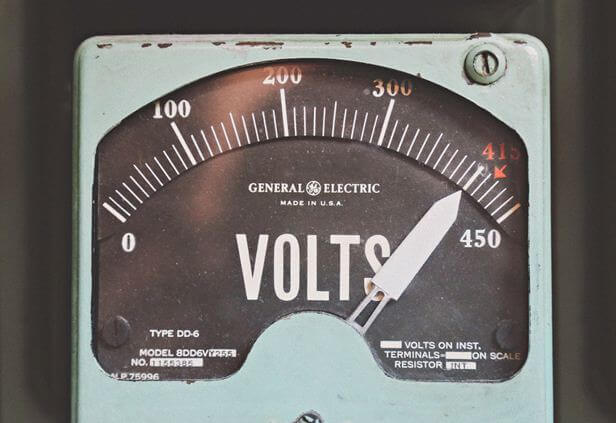Whether you need extra power down at the factory or for the family RV trip, this guide will show you how to set up parallel generators correctly.

No one wants to get into their new RV on a hot summer night, try to crank up the AC, and realize that no cold air is coming out. You go out and check the generator and realize: this thing doesn’t have enough power.
Fortunately for you, there’s a technique called “generator paralleling” that can pump the necessary power to get anything running.
Now you’ve probably got a ton of questions running through your mind: what are parallel generators? Do they need to be the same generator brand? What does any of these mean anyway?
Take a deep breath. Remember, you don’t have to do this on your own.
So sit back, relax, and enjoy your powerful AC while you read our handy guide on how to run parallel generators.
Parallel Generators: How Do They Work?
First, let’s go over how this technique works in the first place.
At an essential level, the need to perform generator paralleling comes from the fact that some generators are not powerful enough to run power-hungry things like air conditioning. A generator strong enough to power an A/C unit on its own might be too massive to move or too expensive to run.
That’s where parallel generators come in. This technique connects two generators to the same application so that you benefit from the power of both. Basically, you’re making a much more powerful generator out of two separate generators.
This can be done with portable generators (like in our RV example) or stationary ones (like in a factory).
Setup
The actual process of connecting parallel generators isn’t too tough: the generators are connected together via cables and then to the equipment that needs to be powered in sequence.
It’s important to remember to always match the amperage and voltage of the generators. Connecting two incompatible generators can damage the generators and be a potential source of danger.
To help, here’s a quick list of what you need to know when selecting generators:
- Compatible alternator pitch
- Same output voltage
- Same frequency
- Parallel cable
Without knowing these things, you can run into some problems.
For example, if one of your generators has a smaller output voltage, the entire system can be limited to that smaller output voltage, making the parallel setup pointless.
Even if a system like that works, it can be difficult to use and maintain.
These are some important considerations to make when using parallel generators (more on that later), so it helps to have a guide like this when making a decision.
Benefits
Other than increased amount of power, there are some nice benefits to paralleling generators that can be decision-makers when it comes to choosing a power supply:
- Easier to maintain
- Larger power capacity
- Easy to control the amount of load
- Redundant in case of emergency
You might be asking yourself, “Why not just buy a larger generator?” This is a valid question, but there are a few reasons why buying a larger generator might not be a feasible task:
- More expensive to buy
- Higher maintenance costs
- Larger generators might not be compatible in parallel with existing generators
- Less fuel efficiency, louder to run
- Difficult to move, can be difficult to install
Considerations for Parallel Generators
As with any other mechanical application, there’s a huge range of things to consider when making a choice for parallel generators.
We’ve split this section into two parts to make it easier: the first part is focused on general life generator use (like for RVs or homes), and the second part is focused on more powerful industrial applications for parallel generators (like for factories or organizations).
First, let’s look at what the average person should consider when thinking about investing in parallel generators.
Everyday Considerations
Make sure to consider these factors when buying parallel generators for your lifestyle or RV use.
Compatibility
The top consideration regardless of application is going to be generator compatibility.
Not every generator will run in parallel. In fact, not every generator is even designed to be able to do this in the first place. This makes checking parallel compatibility extremely important.
This is doubly true if you already have a generator at home. You should always check online to see if your generator is compatible with the one you’ve got your eye on prior to purchasing.
Power Needs
Obviously, you need enough power for what you’re doing. It helps to weigh the power needs against the power available to you.
For example, if you’re just powering something small like the lights in an RV, you may not need to even parallel your generators. However, the AC in an RV requires substantially more power.
This applies to the home as well. If you’re thinking about using parallel generators as a backup power source, you need to think about what you’ll need to power in an emergency and how long that emergency might last.
For instance, if the power tends to go out for days at a time, you’ll need extra power to keep your food cold and keep warm in your home. However, if you just need to power lights for small outages, you probably won’t need huge generators.
Luckily, power capacity in generators is steadily being improved upon, so it’s becoming easier and easier to have even redundant power for your at-home needs.
Budget
It’s also important to consider your budget in combination with the generators’ intended purpose.
If you’re taking generators out into the rugged wilderness, they may need to survive some pretty harsh conditions. With that in mind, the exterior of the generator becomes as important as the guts inside.
As an example, some generators can sport a hefty 900 dollar price tag but deliver a huge amount of power and durability. Other parallel kits can cost half that but may deliver less power.
Industrial Considerations
When using parallel generators inside a factory or manufacturing facility, the considerations become slightly different than your average at-home generator user because the equipment being powered is typically much larger (and more expensive, too).
This makes it critical to select generators with proper power and durability.
Factory Conditions
Generators without significant exterior protection can become damaged, which means the conditions where they are located are very important. After all, any downtime due to damaged generators correlates directly to lost profits.
Always consider airflow, dust and debris, and humidity when figuring out where to place parallel generators.
Maintenance Needs
It’s also important to weigh the amount of maintenance necessary on generators. Just like any other machine, generators need to be taken out of commission to maintain them. This means any equipment attached to that generator will also be out of service.
In the case of equipment that deals with human and factory safety, parallel generators are a great choice because they create a redundancy system. When one generator is taken in for maintenance, the other one can kick in and power necessary equipment.
Design Choices
The generators themselves are important, but so too are the design choices that go into implementing them.
Here are some considerations to think about in regard to generator design:
- Generator distance from powered equipment (long distances might need higher voltages)
- Fuel requirements
- Airflow for proper cooling
- Cost of implementation and maintenance
- Necessary capacity of generators
These are all important considerations because they determine the end efficacy of the system.
Location of Generators
While this has been mentioned already, it’s prudent to mention that the location of the generators should be carefully planned and chosen.
For example, let’s say the factory has an office section with an open layout. If this office isn’t closed off and the generator is placed next to it, there can be a large amount of spillover noise and fumes that are annoying at best and potentially harmful at worst.
Generators also produce a large amount of vibration, which is an important consideration when choosing a location. You don’t want to place a large vibrating piece of metal machinery next to delicate components or final products due to the risk of damage.
It’s also important to look at where the facility air intakes are located. Placing generators near locations where they can naturally vent their exhaust can be useful when trying to minimize new building designs.
Always keep these factors in mind when choosing a location.
Conclusion
Whether you’re setting up a small parallel generator set up for your RV’s AC unit or designing a factory’s power source, it’s important to carefully consider your choice of generator, location, and power needs.
After all, there’s a lot of things that can go wrong, especially if you rush in haphazardly and select two incompatible generators.
With that said, you can use this guide as a handy cheat sheet for parallel generators.
While you’re here, check out some of our other great articles or contact us if you have any questions. We’re here to make sure you’re entertained and informed!




























